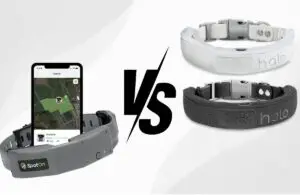Have you ever walked by a dog and been drawn to its collar or harness? Me too. In fact, it’s one of my favorite things to shop for in terms of pet accessories.
When it comes to identifying and training a dog, most people, like me, tend to choose a collar or a harness, or sometimes both for different uses. Collars tend to be the popular choice, but harnesses definitely have their place, too.
It’s important to use these training tools properly in order to ensure your dog becomes the best pet it can be, whether you’re indoors or outdoors, taking a solo walk, or visiting a dog cafe.
Let’s take a look at the different types of each and dig into when situations call for a harness or collar.
Dog Collars

Dog collars loop around your pup’s neck in order to provide a method of control, whether you’re looking to contain or train them. They’re a vital part of being a dog owner for various reasons.
Type of Dog collars
There are several different types of dog collars on the market, each with its own unique features that set them apart from other styles.
Martingale Collars
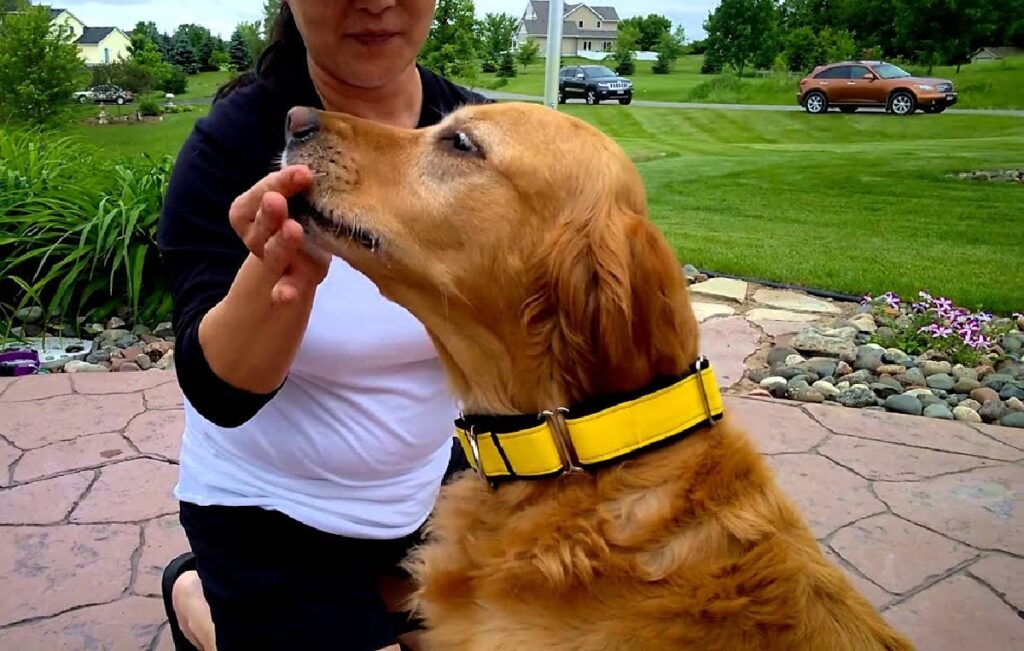
A Martingale collar is a type of training dog collar that tightens its hold on your dog without applying extreme amounts of pressure or cutting off your pup’s air supply. It has two loops, one that goes around your dog’s neck and the other — the control loop — that is responsible for tightening when your dog pulls.
Flat Collars
Flat collars are perhaps the most common type pet owners buy. They have a simple design with varying types of closures and long-lasting materials, such as leather, nylon, polyester, and cotton. They also come in different widths and lengths to fit all types of dogs.
Choke Collars and Prong Collars
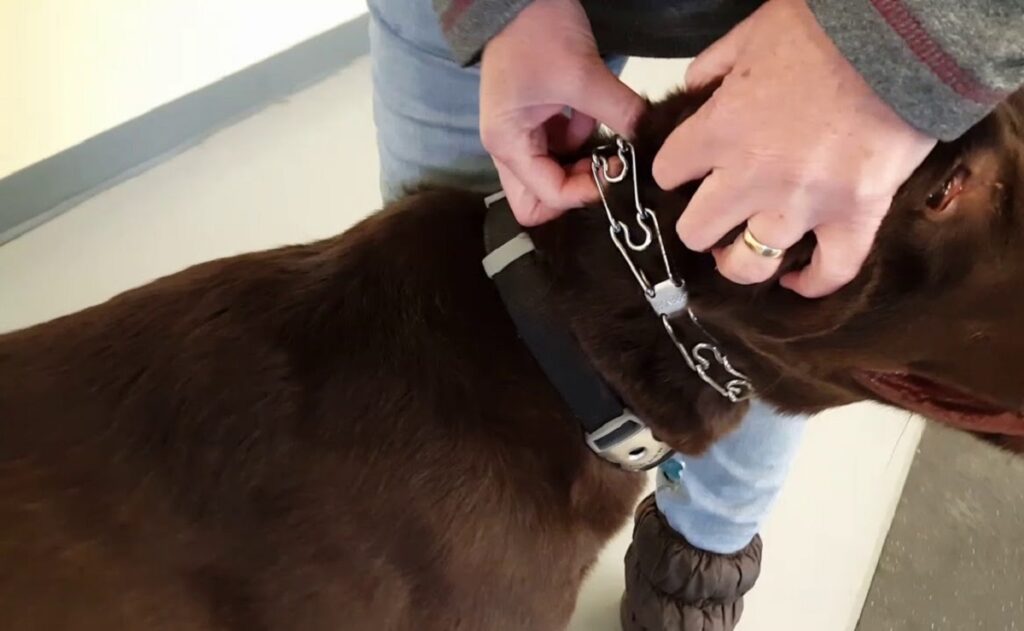
Choke collars and prong collars are designed to discourage pulling. I’m not a very big fan of these types because of their ability to be abused and because there are more options out there, like the Martingale collar, that achieve the same effect without afflicting pain.
Choke and prong collars are made of metal that tightens around your dog’s neck when they pull. They’re also a form of slip collar as they go directly over your dog’s head and lack a closure.
Rolled Collars

Rolled collars are made of leather that’s rolled and then stitched together. They’re fashionable and very durable, but they can be uncomfortable for some pets and cause chafing.
Safety Collars
Safety collars, such as those that have reflective material or threading, and those with breakaway closures are designed for short-term use, such as at night or when outside in the backyard.
Importance of Dog Collars

Dog collars are an important tool for many reasons. They help show that your pet belongs to someone if they should escape, and by adding an ID tag, you can make sure your beloved furry friend makes it home.
Additionally, they make excellent training aids, and with the introduction of new technology in the last several years, some offer much more than simple vanity.
Pros of Dog Collars
There are a number of pros when it comes to dog collars. First, they’re an excellent way to display your dog’s ID tags in case your dog escapes the yard or happens to get off a leash when you’re walking him. Collars are also great for leash control, and there are several types of collars that you can choose from.
Many people use their dog collars for training purposes, using them to guide dogs through various tasks. Those with reflective material or threads are a good safety precaution to keep your pet protected at night.
Finally, since collars come in so many different styles and colors, you can easily change up your pet’s look. Then, there are those that help train your pet to be quiet. Here are our recommendations for the best bark collar for small dogs and the best citronella bark collar.
Cons of Dog Collars
Like pros, there are also some cons of dog collars to be aware of. Improper use, for example, can lead to injury, no matter how safe the collar is. Sometimes, dogs have allergies, and the use of a collar can lead to irritation or discomfort if they have a reaction to the material or if it’s on too snug, which can also lead them to cough excessively, where the collar will need an adjustment.
There’s also the matter of over-relying on a collar to keep your dog in control and the potential choking hazard it can face if you put it on too tight or if it gets caught. Finally, some collars — typically shock collars, which I tend to avoid at all costs — can cause behavioral issues.
Guidelines for Purchasing a Dog Collar
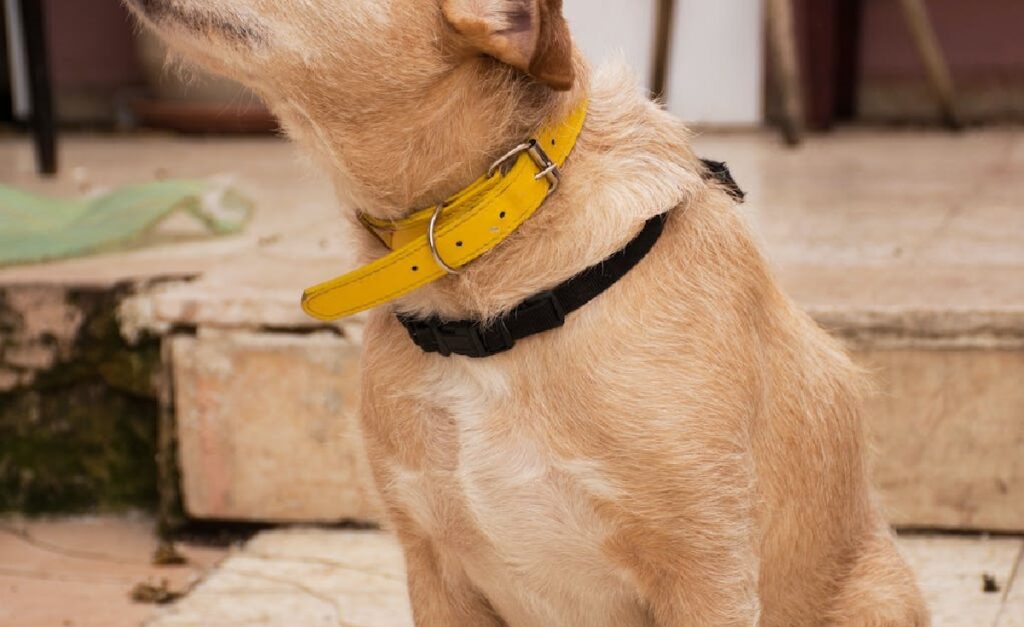
When purchasing a dog collar, there are several elements you’ll want to keep in mind. But before you choose one, consider its use. Are you going for vanity purposes, or are you in need of a functional collar to help with training or identification?
Here are some factors to consider when you’re shopping to ensure you buy the best dog collars available.
Style
First, you’ll want to consider the types of collars available. There are a number of different options, including flat collars, Martingale collars, rolled collars, and choke and prong-style collars, all of which are mentioned in detail above. Then, you have the best smart dog collar options, such as GPS collars and wireless fence systems.
Sizing
Sizing is very important. Too tight, and you run the risk of introducing a choking hazard for your pup. Too loose, and your dog can slip out of the collar and run if it aspires to be the next Houdini.
We have some useful information on how tight should a dog collar be and how to successfully implement that two-finger test. This means you can fit two fingers comfortably. If you can only fit one finger, it’s too tight and can be painful.
Identification
Some companies sell collars that come with personalization options, such as having the dog’s name and your phone number embroidered in a large font for easy readability.
Most collars also have a D ring or similar hardware that makes it easy to attach vaccination and ID tags too, when you take your pet on a trip or even out the door on a long walk.
Closure Types
Collars come with multiple closure types, as well, from the belt buckle-style closure to snap and breakaway clasps. This is where dog owners need to consider what purpose the collar serves their dog, particularly if they’re going to be outdoors on their own, where they could get caught, or if the collar is solely for walking the dog for exercise or bathroom purposes.
When to Use a Collar
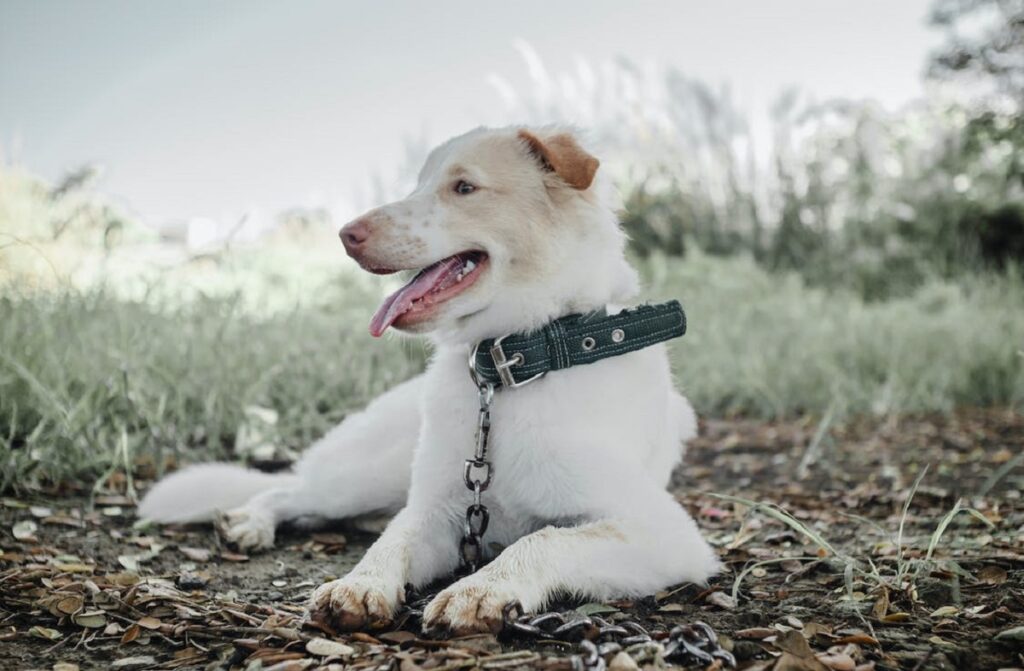
Collars are typically the more common choice, and they definitely have their uses, though they can encourage pulling. If you’re teaching your dog to walk on a leash for the first time, a harness might be a better choice for control purposes, especially with puppies, but more experienced dogs can maintain their control while using a regular collar.
Dog Harnesses

Dog harnesses offer better control because they cover more of your dog’s body. They also have different leash attachments, so you can choose to walk your pup from ahead or behind. There are a number of benefits to using a harness, either as an alternative or in addition to a collar.
Types of Dog Harnesses
Like collars, harnesses come in many different styles. Let’s take a look at the most common.
Front-clip Harness
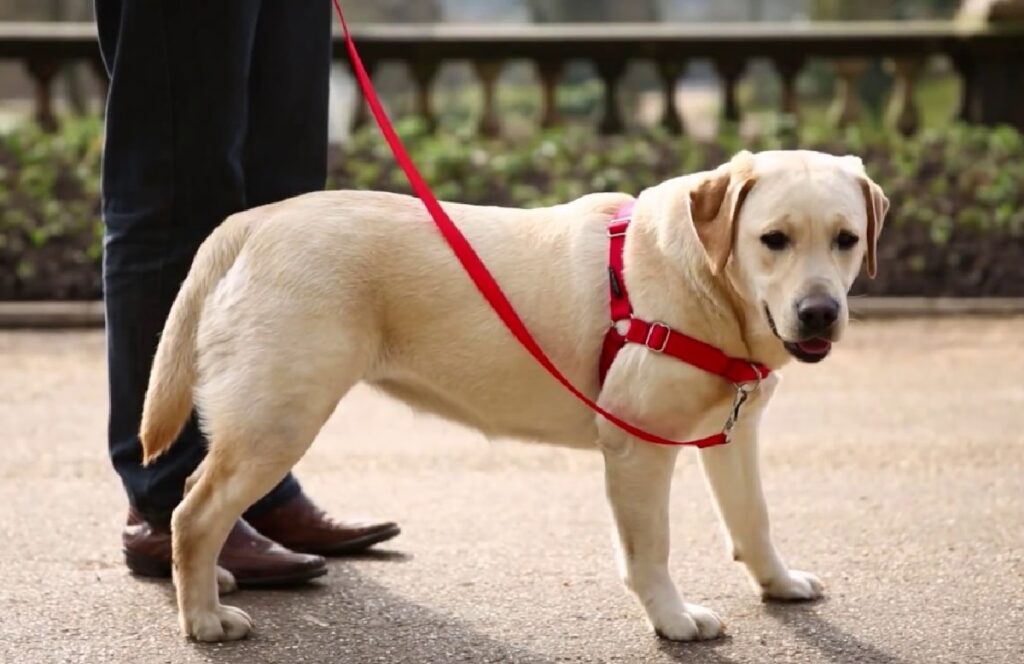
A front clip harness is a body harness that has a leash attachment at the front of the chest. Front clip harnesses are good for puppies and owners who want the added control of being able to guide their dogs in a specific direction. The front clip harness is a popular choice among new pet owners as well.
Back-clip Harness

A back clip harness is one that has a leash attachment on the dog’s back. Back clip harnesses are good for those dogs and puppies who are constantly pulling because the owner can rein them in without changing their direction.
No-pull Harness
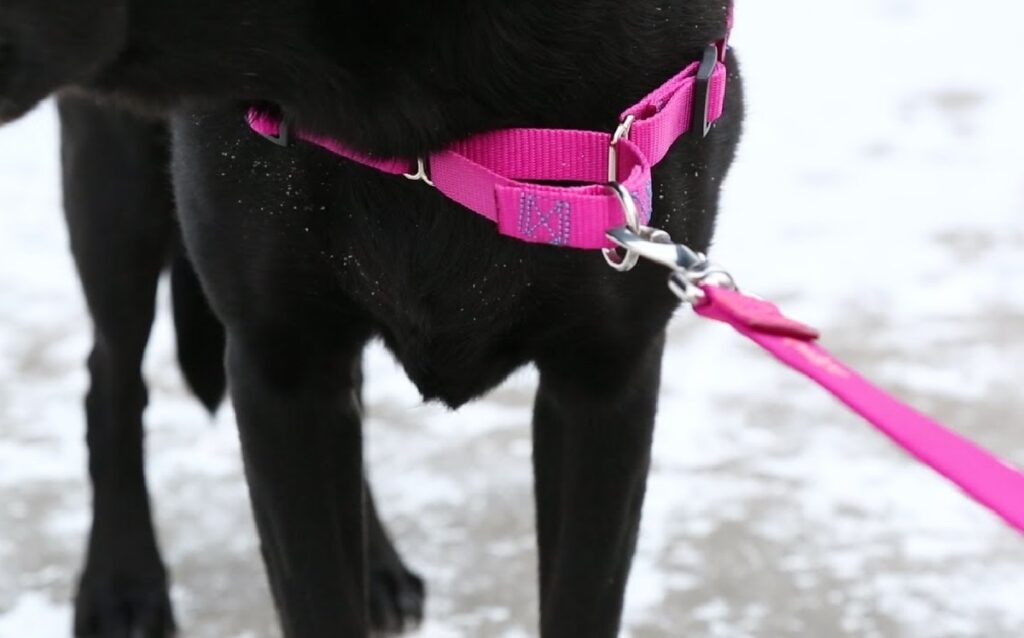
Pulling while out on a walk is the bane of most dog owners’ existence, especially with puppies who have no leash manners yet. A no-pull harness discourages a dog’s natural instinct to move on ahead and, instead, is an excellent training tool to keep them on pace with their owner.
Head Halter
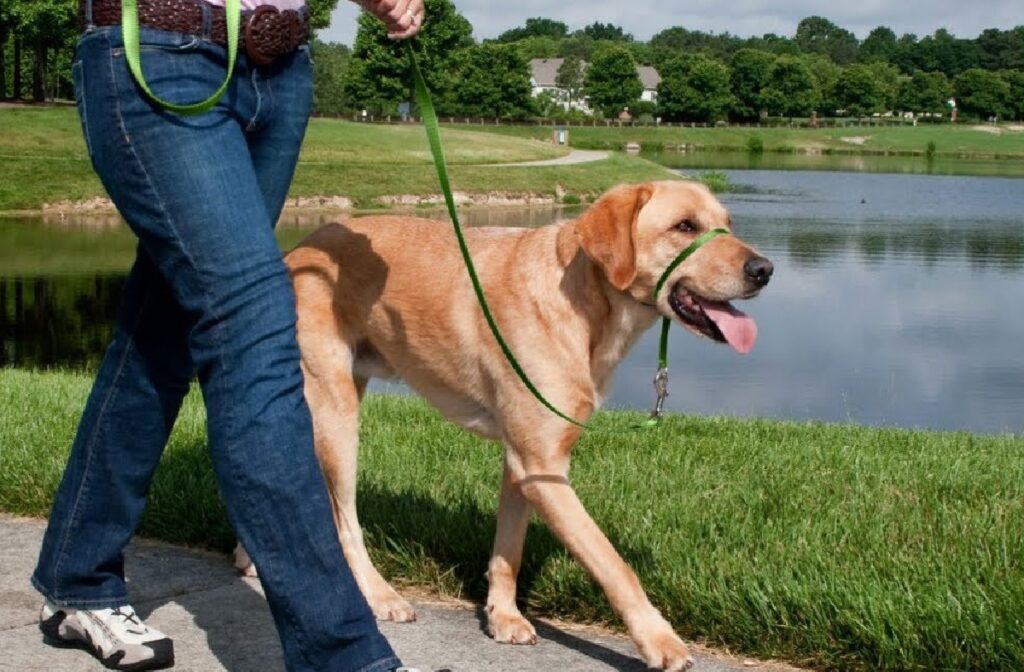
A head halter is more of a training tool than a body harness, but it’s not quite a collar either. It falls somewhere in the middle of the two. It has one loop that goes over the dog’s snout — without restricting its ability to bark, eat, or play — and another that goes around its neck like a regular flat collar.
A head halter does have some restrictions, however. For example, it won’t work on dogs with flat faces. It is, however, a good option for puppies who need just a bit more control.
Importance of Dog Harnesses
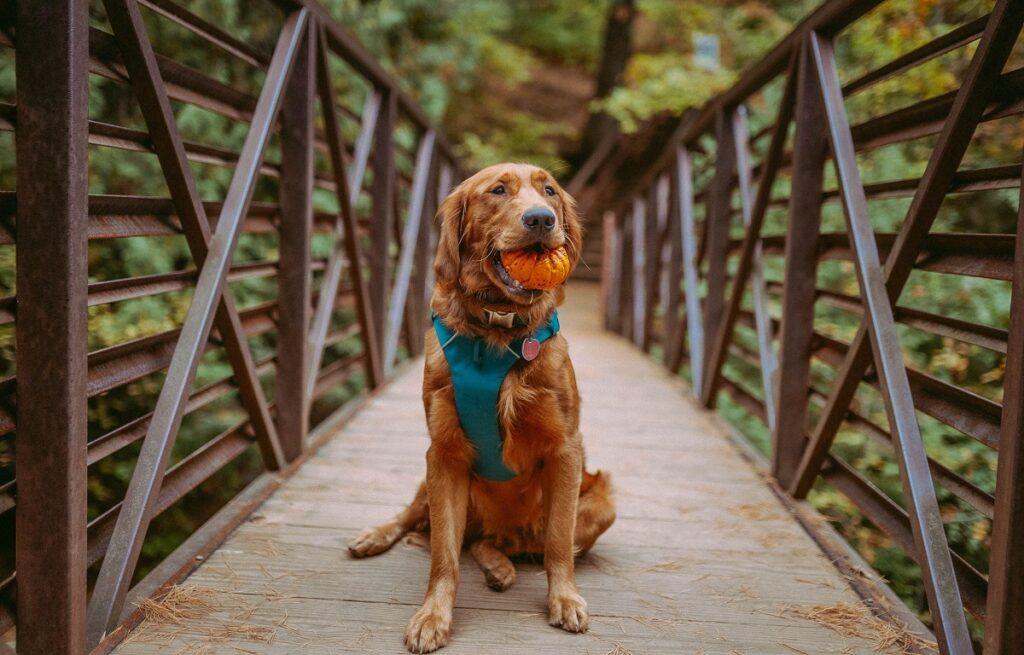
Dog harnesses make it easy to train your pup, especially puppies who need that extra bit of control in the beginning. Some come with handles, so you can easily grab your pup, as well. Others have specialized hooks or pockets to hold treats or equipment, such as for those who have disabilities or illnesses and need to keep certain medical supplies handy.
Dog harnesses are similar to collars in that they make it easy to keep your dog contained when you go out walking, but that’s where the similarities end, pretty much. Where a collar goes over your dog’s head and neck, a harness goes around your dog’s legs and under the dog’s chest.
Certain breeds benefit from dog harnesses vs. collars because of biological factors.
Pros of Dog Harness
While there are more types of collars than harnesses, the latter definitely offers more control for pets that exhibit control behavior issues, such as constant pulling. It’s also a good alternative for a dog with throat issues, such as throat damage that makes wearing a collar dangerous.
Dog harnesses help reduce neck strain because they distribute the pressure over the dog’s body instead of on its neck or throat when the dog pulls. Pulling harnesses also offer a better solution for containment while on a walk since it’s much harder to dodge an escape-proof dog harness than it is to pull out of a collar. They also help dogs with back pain and leash walking.
Cons of Dog Harnesses
Dog harnesses aren’t without their drawbacks, though. Some dogs simply don’t like harnesses. Additionally, they can cause your dog to overheat during the warmer months of the year since harnesses cover more body surface area.
Harnesses are a bit more difficult to size and fit to your pup and often require more adjusting. On a dog that refuses to sit still, they can be very challenging to put on.
Guidelines for Purchasing a Dog Harness
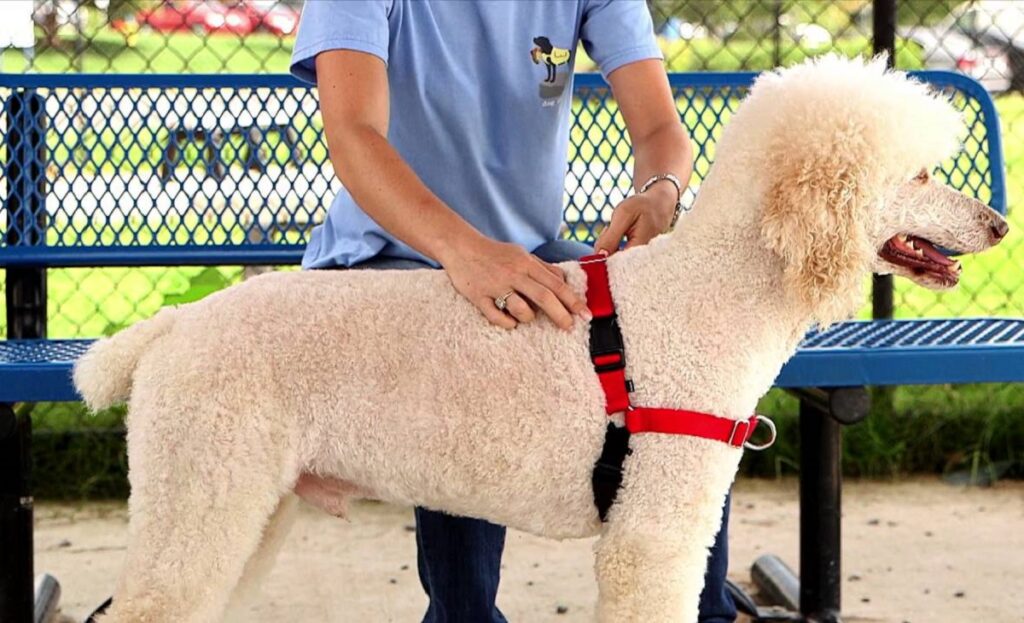
Like collars, you’ll want to pay close attention to the features of a harness when making your purchase.
Sizing
Getting the right fit is important because a harness that’s too snug can injure your pet, but one that’s too loose won’t give you the control you desire. Where with a collar, you simply measure your dog’s size around its neck, a harness requires that you measure your dog’s chest, too. This may be difficult with small dogs.
Materials
There are different materials to choose from when it comes to harnesses. For active dogs, for example, a sporty material designed to wick away sweat is good. Others have a simple nylon or cotton fabric that’s durable.
Other Features to Keep in Mind
In addition to considering the fit and materials, you may want to shop for a harness that has a handle for better control and those designed to keep your pet safe with reflective material.
When to Use a Harness
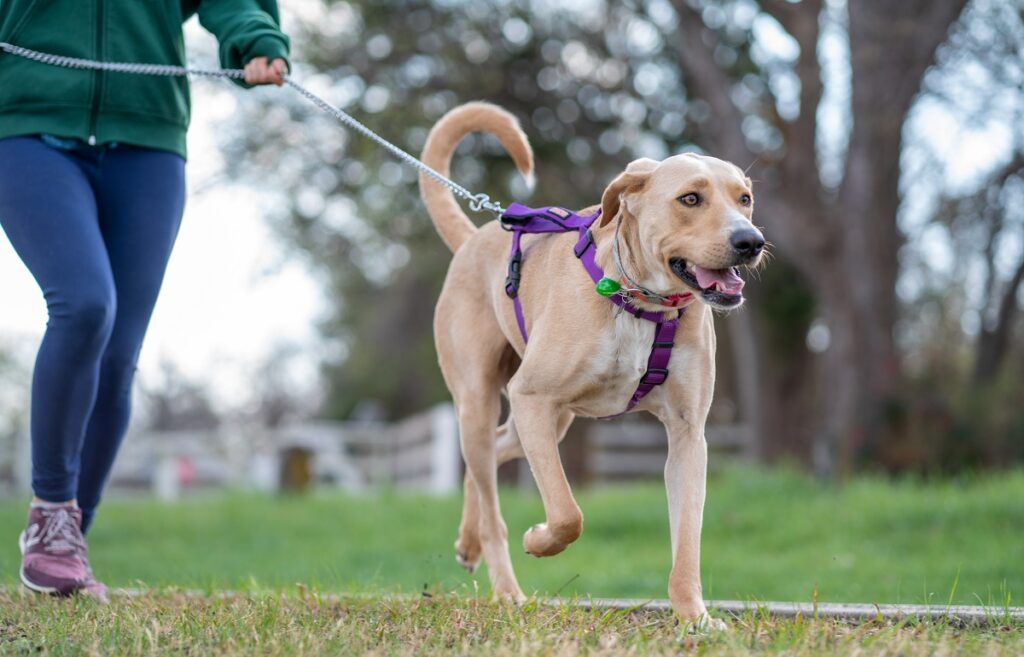
There are specific times and specific dog breeds where it’s better to use a harness over a collar, for example, when training a puppy or for owners who have toy breeds. Harnesses are also effective for learning to walk on a leash.
FAQ's
When it comes to harnesses and collars, it’s truly an owner’s prerogative. However, when it comes to training, age is a factor. For example, a puppy that has no control and likes to pull would benefit from a harness because it offers better control.
Then, when it’s an adult and used to walking on a leash, you can switch to a collar. Those with less physical strength and those suffering from medical conditions are better with collars.
Yes, some dog breeds can actually benefit from a harness vs. collar, particularly those with slender necks that injure easily. These include greyhounds, dachshunds, and toy breeds, like chihuahuas, to name a few.
Then, there are the brachycephalic breeds, those that have flat faces or short noses that can result in respiratory issues or those with medical conditions such as a tracheal collapse or glaucoma. For these breeds, a veterinarian may recommend going with a harness over a collar for obvious reasons.
Final Thought
When it comes to your dog wearing a harness vs. collar, it’s important to know that there is no best choice, per se. You may be more comfortable with a harness vs. other types of containment, which is perfectly fine. You have to do what’s right for you. First-time owners should try out multiple styles and types until they find one that works for them, but always keep supervision in mind to keep your pet healthy. Don’t be afraid to experiment!
For more comparisons, check out our best wireless dog fence recommendations and our SpotOn vs. Halo dog fence and Fi vs. Halo collar reviews.





